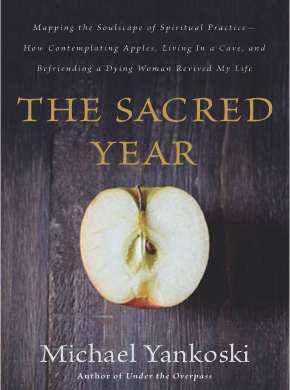 My usual way with a new Christian book is to read it right through without pausing much. I aim to get the overall sense of the author’s objective or argument, expecting to start back at the beginning, reading this time more slowly, notebook and pen in hand. With ‘The Sacred Year’, I have so far only reached the end of the first section, having paused to reflect often, and having actively resisted the urge to copy significant statements into the notebook for further meditation. I constantly attempt to share with friends both the author’s ideas and his experiences because I am so engaged with them. They prompt thought and they inspire action. I already see myself changing because of what I am reading and can see how I am incorporating new things into my daily living. It seems that, as I read, the stories and concepts from the book are overlaid like a grid to help me view my life and navigate my ways.
My usual way with a new Christian book is to read it right through without pausing much. I aim to get the overall sense of the author’s objective or argument, expecting to start back at the beginning, reading this time more slowly, notebook and pen in hand. With ‘The Sacred Year’, I have so far only reached the end of the first section, having paused to reflect often, and having actively resisted the urge to copy significant statements into the notebook for further meditation. I constantly attempt to share with friends both the author’s ideas and his experiences because I am so engaged with them. They prompt thought and they inspire action. I already see myself changing because of what I am reading and can see how I am incorporating new things into my daily living. It seems that, as I read, the stories and concepts from the book are overlaid like a grid to help me view my life and navigate my ways.
I, therefore, find myself returning to the beginning before I have finished an initial reading, in order to read slowly and pause often… and I am glad to know that it could be a while before I come to the chapters in section two and then section three. I am savouring this book, in no rush.
So what is this book about? Michael Yankoski has recorded his response to a year in which he experimented with some spiritual disciplines. The practices of creativity, simplicity, attentiveness are amongst the six disciplines covered within section one, concerning Depth with Self; practices such as confession and reading scripture are within the section on Depth with God; and finally Depth with Others includes the practices of gratitude, justice and community. Much of the text is narrative, recounting incidents in the year, and Michael’s response to practising disciplines for the first time. He also had wise guidance from his spiritual mentor, and those conversations are there in the book for us to benefit too.
I already see myself changing because of what I am reading and can see how I am incorporating new things into my daily living. The stories and concepts from the book are overlaid like a grid to help me view my life and navigate my ways.
In some ways, the narrative style makes for easy reading, but even so many events, anecdotes and statements are deeply thought provoking. It is not a book to skim over, as I have found out; actually, it may feel more like a ‘devotional’ at times, as before God one allows words and ideas to sink deeper and have full effect. I have read many books describing Spiritual Disciplines, and suggesting ways to engage with the disciplines, but this one is different. Michael’s own responses and reflections are part of the ‘guidance’ and explanation—the theory is there but so is the practical demonstration. By reading this book, I have discovered new facets to the theoretical side of the disciplines, too. The text is so captivating, focusing as it does on such commonplace things as growing tomato plants, throwing clay pots, or heeding the advice of neighbours, to make the meaning clear. There is plenty of humour and self-deprecation to help the reader feel the humanity of the author, and the accessibility of the subjects.
One practises spiritual disciplines in order to walk and live more closely with the Lord, and to allow and embrace change and transformation by the Holy Spirit. I am inspired by ‘The Sacred Year’ to make my own experiments, refreshed by new insights, and with my mind full of novel and memorable images to help me.




